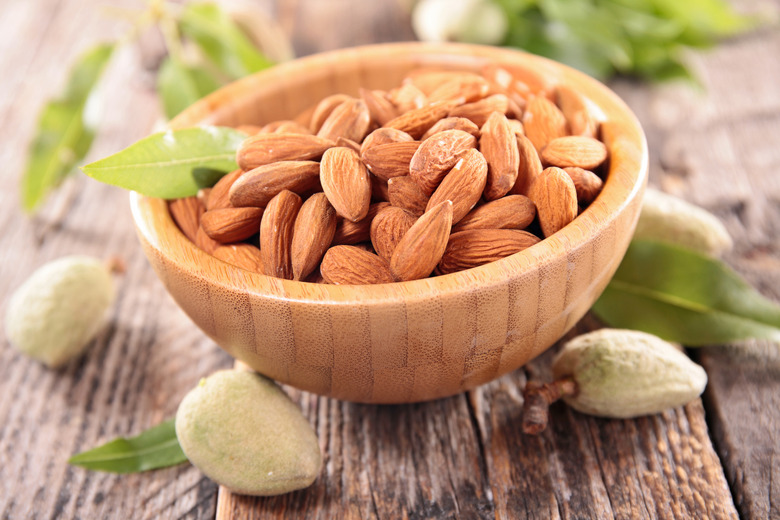Almonds Aren't Nuts, They're Fruit
Bomb dropped. Almonds, the favorite nuts of so many healthy eaters due to their healthy fats, aren't actually nuts at all. They're a fruit.
Before you panic, though: They still have all the fats, fiber, and nutrients required to qualify in our diets as nut. Nutritionally speaking, almonds are exactly what you thought they were. Botanically, it's a different story.
The shelled staple food is the seed of an almond fruit — a fuzzy, green growth that's similar to a peach or a plum. Once the fruit ripens, almond harvesters remove the flesh of the fruit from the plant, revealing an almond seed inside.
A nut, on the other hand, is a hard-shelled growth with both the fruit and seed inside. Hazelnuts, for example, grow without a fleshy exterior, their hard shells directly exposed as they develop on the tree. But almonds grow with that outer layer of flesh as food, underneath which the hard shell of the almond grows. This qualifies the almond fruit as a drupe, just like a mango or a cherry.
This means that almond butter isn't technically nut butter — it's jam. But don't worry; they're not full of sugar. Almonds have all the healthy qualities of nuts, and snacking on a handful of them is still a healthful choice.
The drupe seeds are packed with protein, fiber, and micronutrients like vitamin E and magnesium. They've been shown to lower your cholesterol and even make you smarter. But if you don't like munching on them raw, you're not alone. There are more flavorful, fun ways to eat almonds — you can start with these delicious recipes.
